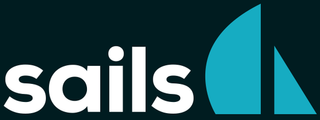Related Research Articles
Server-side scripting is a technique used in web development which involves employing scripts on a web server which produces a response customized for each user's (client's) request to the website. Scripts can be written in any of a number of server-side scripting languages that are available. Server-side scripting is distinguished from client-side scripting where embedded scripts, such as JavaScript, are run client-side in a web browser, but both techniques are often used together. The alternative to either or both types of scripting is for the web server itself to deliver a static web page.

Model–view–controller (MVC) is a software design pattern commonly used for developing user interfaces that divides the related program logic into three interconnected elements. These elements are the internal representations of information, the interface that presents information to and accepts it from the user, and the controller software linking the two.

A web application is application software that is accessed using a web browser. Web applications are delivered on the World Wide Web to users with an active network connection.
Jakarta Faces, formerly Jakarta Server Faces and JavaServer Faces (JSF) is a Java specification for building component-based user interfaces for web applications. It was formalized as a standard through the Java Community Process as part of the Java Platform, Enterprise Edition. It is an MVC web framework that simplifies the construction of user interfaces (UI) for server-based applications by using reusable UI components in a page.
In software engineering, the terms frontend and backend refer to the separation of concerns between the presentation layer (frontend), and the data access layer (backend) of a piece of software, or the physical infrastructure or hardware. In the client–server model, the client is usually considered the frontend and the server is usually considered the backend, even when some presentation work is actually done on the server itself.
Web development is the work involved in developing a website for the Internet or an intranet. Web development can range from developing a simple single static page of plain text to complex web applications, electronic businesses, and social network services. A more comprehensive list of tasks to which Web development commonly refers, may include Web engineering, Web design, Web content development, client liaison, client-side/server-side scripting, Web server and network security configuration, and e-commerce development.

Ruby on Rails is a server-side web application framework written in Ruby under the MIT License. Rails is a model–view–controller (MVC) framework, providing default structures for a database, a web service, and web pages. It encourages and facilitates the use of web standards such as JSON or XML for data transfer and HTML, CSS and JavaScript for user interfacing. In addition to MVC, Rails emphasizes the use of other well-known software engineering patterns and paradigms, including convention over configuration (CoC), don't repeat yourself (DRY), and the active record pattern.

A dynamic web page is a web page constructed at runtime, as opposed to a static web page, delivered as it is stored. A server-side dynamic web page is a web page whose construction is controlled by an application server processing server-side scripts. In server-side scripting, parameters determine how the assembly of every new web page proceeds, and including the setting up of more client-side processing. A client-side dynamic web page processes the web page using JavaScript running in the browser as it loads. JavaScript can interact with the page via Document Object Model (DOM), to query page state and modify it. Even though a web page can be dynamic on the client-side, it can still be hosted on a static hosting service such as GitHub Pages or Amazon S3 as long as there is not any server-side code included.

Catalyst is an open source web application framework written in Perl, that closely follows the model–view–controller (MVC) architecture, and supports a number of experimental web patterns. It is written using Moose, a modern object system for Perl. Its design is heavily inspired by frameworks such as Ruby on Rails, Maypole, and Spring.

TurboGears is a Python web application framework consisting of several WSGI components such as WebOb, SQLAlchemy, Kajiki template language and Repoze.

Aptana, Inc. is a company that makes web application development tools for use with a variety of programming languages. Aptana's main products include Aptana Studio, Aptana Cloud and Aptana Jaxer.
Scaffolding, as used in computing, refers to one of two techniques:
A single-page application (SPA) is a web application or website that interacts with the user by dynamically rewriting the current web page with new data from the web server, instead of the default method of a web browser loading entire new pages. The goal is faster transitions that make the website feel more like a native app.
In software development XRX is a web application architecture based on XForms, REST and XQuery. XRX applications store data on both the web client and on the web server in XML format and do not require a translation between data formats. XRX is considered a simple and elegant application architecture due to the minimal number of translations needed to transport data between client and server systems. The XRX architecture is also tightly coupled to W3C standards to ensure XRX applications will be robust in the future. Because XRX applications leverage modern declarative languages on the client and functional languages on the server they are designed to empower non-developers who are not familiar with traditional imperative languages such as JavaScript, Java or .Net.
ZK is an open-source Ajax Web application framework, written in Java, that enables creation of graphical user interfaces for Web applications with little required programming knowledge.
Mustache is a web template system. Mustache is described as a logic-less system because it lacks any explicit control flow statements, like if and else conditionals or for loops; however, both looping and conditional evaluation can be achieved using section tags processing lists and anonymous functions (lambdas). It is named "Mustache" because of heavy use of braces, { }, that resemble a sideways moustache. Mustache is used mainly for mobile and web applications.
Mojito is an environment agnostic, Model-View-Controller (MVC) web application framework. It was designed by Ric Allinson.

Sails.js is a model–view–controller (MVC) web application framework developed atop the Node.js environment, released as free and open-source software under the MIT License. It is designed to make it easy to build custom, enterprise-grade Node.js web applications and APIs. Emulating the MVC architecture of other frameworks, like Ruby on Rails, it offers similar pattern and familiarity, reducing the cognitive burden when switching between other frameworks/languages.
The following outline is provided as an overview of and topical guide to web design and web development, two very related fields:
References
- ↑ Multiple (wiki). "Web application framework". Docforge. Archived from the original on 2015-07-23.
- ↑ "Top Open-Source Static Site Generators". StaticGen.
- ↑ "CGI: Common Gateway Interface". Archived from the original on 2009-04-09.
- ↑ "CGI". www.ibm.com. Retrieved 2021-05-07.
- ↑ Thomson, Kris (2003-10-29). "Clarification on MVC= Pull and MVC Push" . Retrieved 2007-07-29.
- ↑ Microsoft. "Three-tiered distribution" . Retrieved 2011-09-19.
- ↑ Oracle. "clustering_concepts_10en" (PDF). Retrieved 2011-09-19.
- ↑ Robert R. Perkoski. "Introduction to Web Development". Archived from the original on 2013-11-07.
- ↑ IBM. "Using Client Access Express in a three tier environment" . Retrieved 2011-09-19.
- ↑ Oracle. "Understanding the Three-Tier Architecture" . Retrieved 2011-09-19.
- ↑ Microsoft. "Pragmatic Architecture: Layering" . Retrieved 2011-09-19.
- ↑ Arokia. "3-Tier Web Architecture" . Retrieved 2011-09-19.
- ↑ "ASP.NET MVC Controller Best Practices". Archived from the original on 2011-10-11. Retrieved 2011-09-19.
- ↑ Jamis Buck. "Skinny Controller, Fat Model". Archived from the original on 2015-05-16.
- ↑ "Getting Started With Web Frameworks". Wired Magazine . Retrieved 2018-04-02.
- ↑ KLIMUSHYN, Mel (6 April 2015). "Web Application Architecture – Client-Side vs. Server-Side". Atomic Spin. Retrieved 2016-03-06.
- ↑ "AngularJS vs. Backbone.js vs. Ember.js". www.airpair.com. Retrieved 2016-06-04.
- 1 2 Fowler, Martin. "bliki: InversionOfControl". martinfowler.com. Retrieved 2016-03-06.
- ↑ Xue, Qiang. "Capital One Engineering – Philosophies that Shaped Successful Frameworks". www.capitalone.io. Retrieved 2016-03-06.
- 1 2 3 "Active Record Basics". Ruby on Rails. Retrieved March 20, 2021.
Object Relational Mapping, commonly referred to as its abbreviation ORM, is a technique that connects the rich objects of an application to tables in a relational database management system...Active Record automatically creates methods to allow an application to read and manipulate data stored within its tables.
- ↑ "Active Record Transactions". Ruby on Rails. Retrieved March 20, 2021.
- ↑ "What is AJAX". www.dlsweb.rmit.edu.au. Retrieved 2021-05-07.
- ↑ Maximilien, E. M. (2006). "Tutorial 4: Web Services on Rails: Using Ruby and Rails for Web Services Development and Mashups". 2006 IEEE International Conference on Web Services (ICWS'06). pp. xliii. doi:10.1109/ICWS.2006.139. ISBN 0-7695-2669-1.